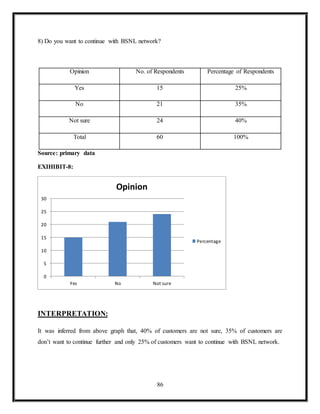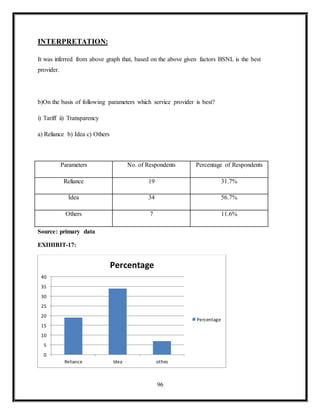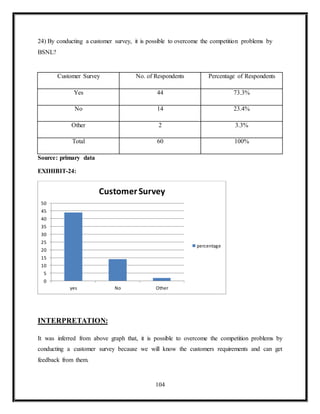The document provides an overview of strategic management and competitive analysis. It discusses the need to carefully analyze competitors, including defining who they are, analyzing their strengths and weaknesses, and analyzing a company's own strengths and weaknesses. Competitive analysis helps companies understand customer needs and develop effective strategies. The document also discusses profiling competitors, identifying new potential competitors, factors that influence marketing strategies, and the role of marketing management.








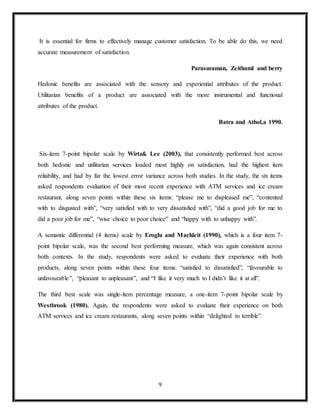





![15
creating, communicating, delivering, and exchanging offerings that have value for customers,
clients, partners, and society at large."
The techniques used in marketing include choosing target markets through market analysis
and market segmentation, as well as understanding methods of influence on the consumer
behavior.
From a societal point of view, marketing provides the link between a society's material
requirements and its economic patterns of response. This way marketing satisfies these needs
and wants through the development of exchange processes and the building of long-term
relationships.
In the case of nonprofit organization marketing, the aim is to deliver a message about the
organization's services to the applicable audience. Governments often employ marketing to
communicate messages with a social purpose, such as a public health or safety message, to
citizens
2.7 FACTORS OF INFLUENCE ON MARKETING STRATEGIES :
In addition to the controllable marketing mix factors, there are uncontrollable factors called
environmental forces. The external influences are the forces that affect the characteristics of the
marketing strategies to which marketeers adapt. Amongst others they include: regulatory,
economic, social, political environmental, competitive, and technological.[15]
• Regulatory: This refers to laws and legality (governmental policies) that may affect the way
marketing can be characterized. For example, government restriction on the importation of a
particular product might hinder the marketers playing in that particular field.
• Economic. Various trends in the economic business cycle, including inflation, recessions,
deficit, or income level. Each of these factors can have a direct impact on marketing which may
have to be re-evaluated and overhauled as a result.](https://image.slidesharecdn.com/projectontelecomsector-220111040828/85/Project-on-telecom-sector-15-320.jpg)

![17
they operate.[3] In analyzing these issues, the discipline of marketing management often overlaps
with the related discipline of strategic planning.
Two customer segments are often selected as targets because they score highly on two
dimensions:
1. The segment is attractive to serve because it is large, growing, makes frequent purchases,
is not price sensitive (i.e. is willing to pay high prices), or other factors; and
2. The company has the resources and capabilities to compete for the segment's business,
can meet their needs better than the competition, and can do so profitably.
A commonly cited definition of marketing is simply "meeting needs profitably"
The implication of selecting target segments is that the business will subsequently allocate more
resources to acquire and retain customers in the target segment(s) than it will for other, non-
targeted customers. In some cases, the firm may go so far as to turn away customers who are not
in its target segment.The doorman at a swanky nightclub, for example, may deny entry to
unfashionably dressed individuals because the business has made a strategic decision to target
the "high fashion" segment of nightclub patrons.
In conjunction with targeting decisions, marketing managers will identify the
desired positioning they want the company, product, or brand to occupy in the target customer's
mind. This positioning is often an encapsulation of a key benefit the company's product or
service offers that is differentiated and superior to the benefits offered by competitive products.
For example, Volvo has traditionally positioned its products in the automobile market in North
America in order to be perceived as the leader in "safety", whereasBMW has traditionally
positioned its brand to be perceived as the leader in "performance".
Ideally, a firm's positioning can be maintained over a long period of time because the company
possesses, or can develop, some form of sustainable competitive advantage. The positioning
should also be sufficiently relevant to the target segment such that it will drive the purchasing
behavior of target customers .To sum up,the marketing branch of a company is to deal with the](https://image.slidesharecdn.com/projectontelecomsector-220111040828/85/Project-on-telecom-sector-17-320.jpg)


![20
getting the product to the consumer such as distribution channels, market coverage, and
movement organization. The last P stands for Promotion which is the process of reaching the
target market andconvincing them to buy the product. The four Ps determine how marketing
satisfies consumer needs. They are considered controllable marketing mix factors, meaning that
they can change or be altered as needed. Habits, lifestyle, and diet are all considered to be
controllable risk factors.
In the 1990s, the concept of four C's was introduced as a more customer-driven replacement of
four P's.[9] There are two theories based on four Cs: Lauterborn's four Cs (consumer, cost,
communication, convenience)[10] and Shimizu's four Cs (commodity, cost, communication,
channel) in the 7Cs Compass Model (Co-marketing).
2.10 Marketing environment :
Staying ahead of the consumer is an important part of a marketer's job. It is important to
understand the "marketing environment" in order to comprehend the consumers concerns,
motivations and to adjust the product according to the consumers needs. Marketers use the
process of marketing environmental scans, which continually acquires information on events
occurring outside the organization to identify trends, opportunities and threats to a business. The
six key elements of a marketing scan are thedemographic forces, socio-cultural forces, economic
forces, regulatory forces, competitive forces, and technological forces. Marketers must look at
where the threats and opportunities stem from in the world around the consumer to maintain a
productive and profitable business.
The market environment is a marketing term and refers to factors and forces that affect a firm's
ability to build and maintain successful relationships with customers. Three levels of the
environment are: Micro (internal) environment - forces within the company that affect its ability
to serve its customers. Meso environment – the industry in which a company operates and the
industry's market(s).Macro (national) environment - larger societal forces that affect the
microenvironment.](https://image.slidesharecdn.com/projectontelecomsector-220111040828/85/Project-on-telecom-sector-20-320.jpg)






























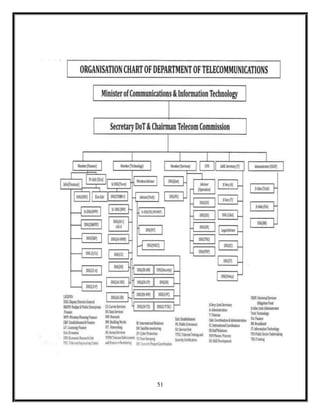










![62
4.5 OBJECTIVES:
To be the Leading Telecom Services provider by achieving higher rate of growth so as to
become a profitable enterprise.
To provide quality and reliable fixed telecom service to our customer and thereby
increase customers confidence.
To provide customer friendly mobile telephone service of high quality and play a leading
role as GSM operator in its area of operation.
Strategy for:
Rightsizing the manpower
Providing greater customer satisfaction
Contribute towards:
Broadband customers base of 20 Mn in India by the end of 2011-12 as per
broadband policy 2004.
Providing telephone connections in villages as per Government policy.
To leverage the existing infrastructure of BSNL for facilitating implementation of other
government programmes and initiatives particularly in the rural areas.
To look for the opportunity of possible expansion of BSNL footprint globally by
exploring international telecom in developing markets such as Africa
4.6 Boardof Directors
The Board comprise of 12 Directors, of which 5 [including the CMD] are whole
time Directors and 2 Government Nominee Directors . The present composition is as under
Chairman & Managing Director- ShriAnupamShrivastava
Director-(Enterprise) –Shri A.N. Rai
Director - Consumer Fixed Access(CFA)- ShriN.K.Gupta
Director - (HRD) & (Fin)- Smt. Sujata Ray
Director - (Enterprise) - ShriN.K.Mehta
Director - (CM) - ShriR.K.Mittal
Govt. Director- Shri N.SIVASAILAM](https://image.slidesharecdn.com/projectontelecomsector-220111040828/85/Project-on-telecom-sector-62-320.jpg)























